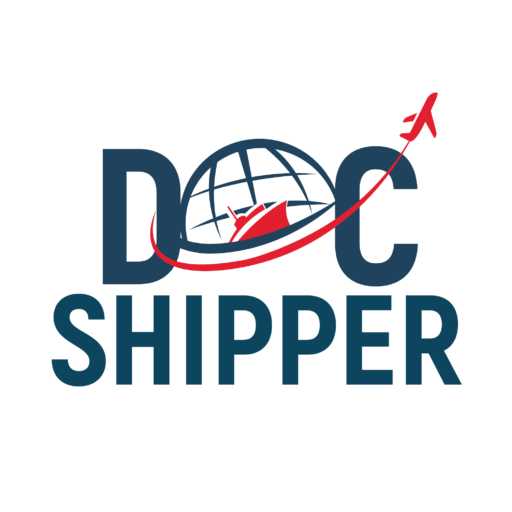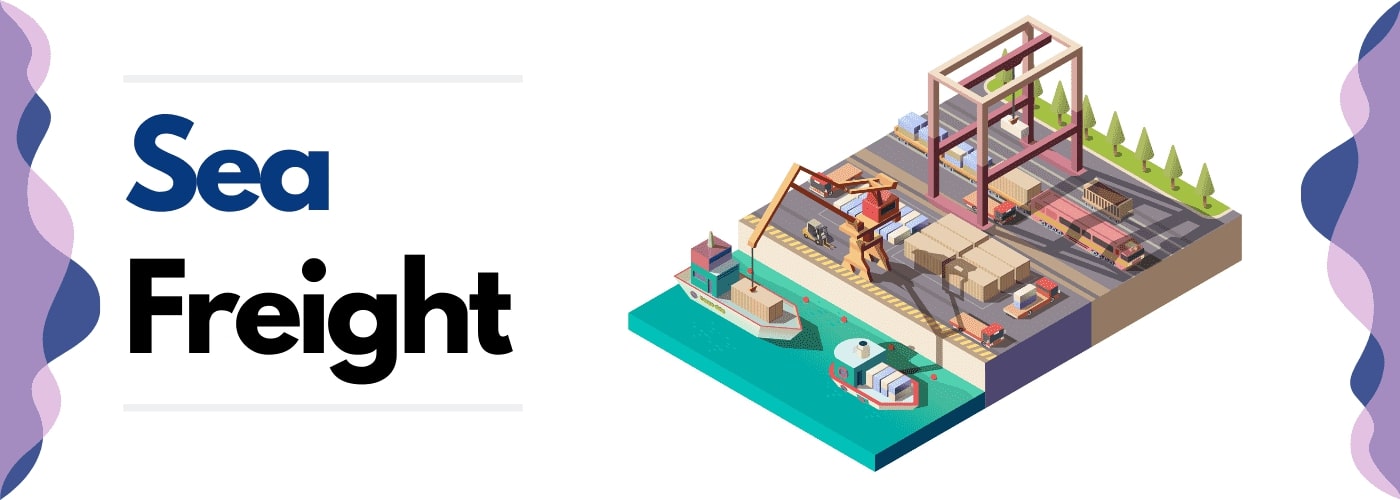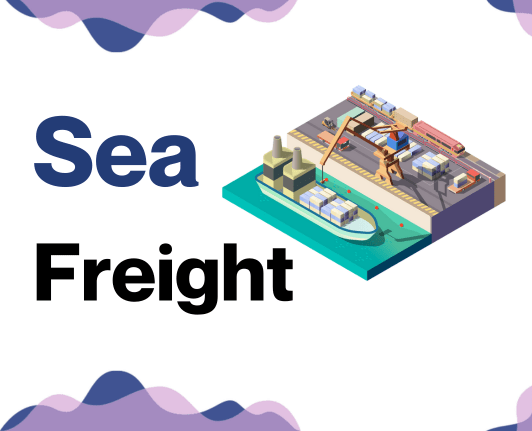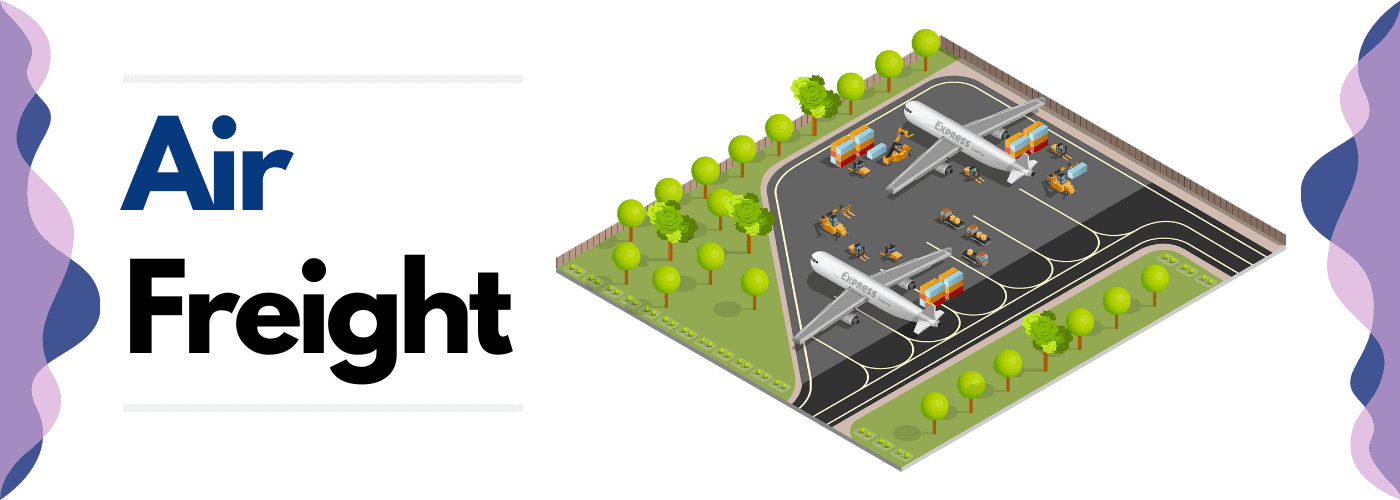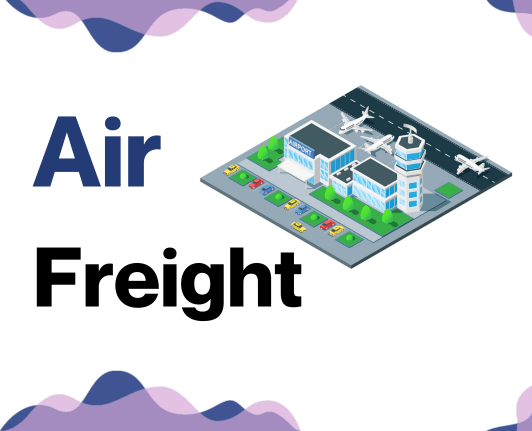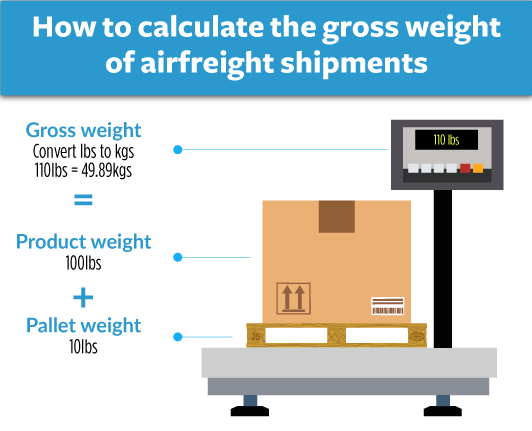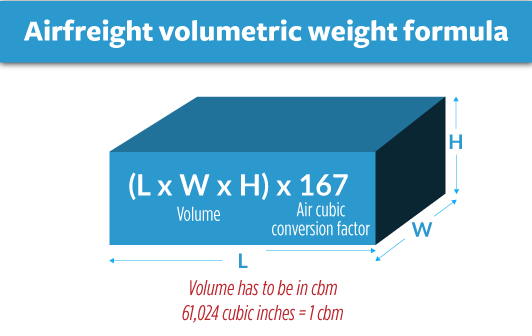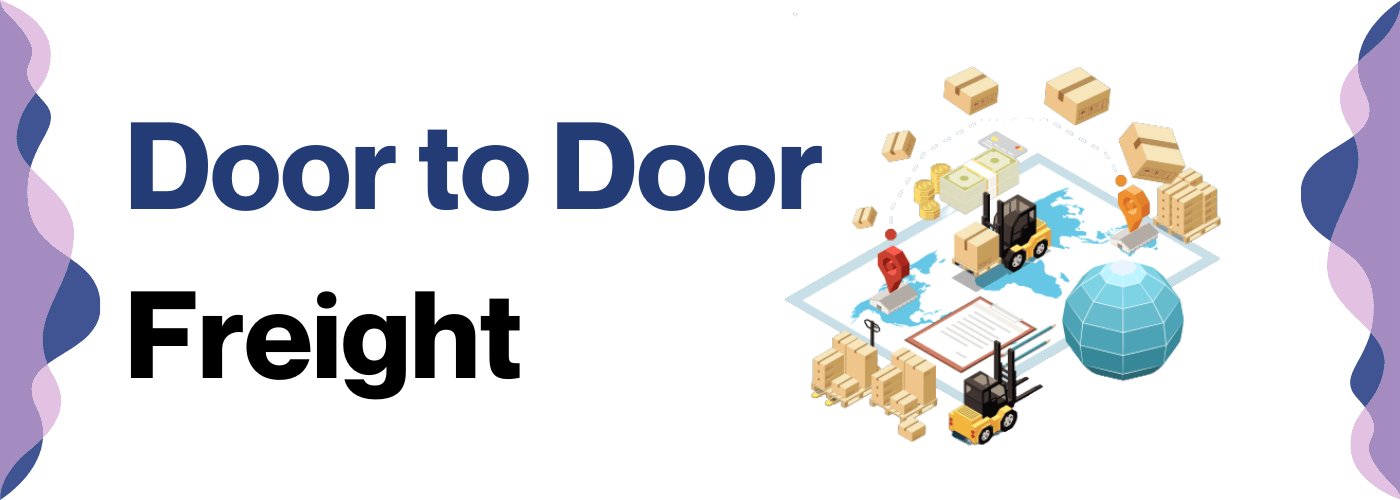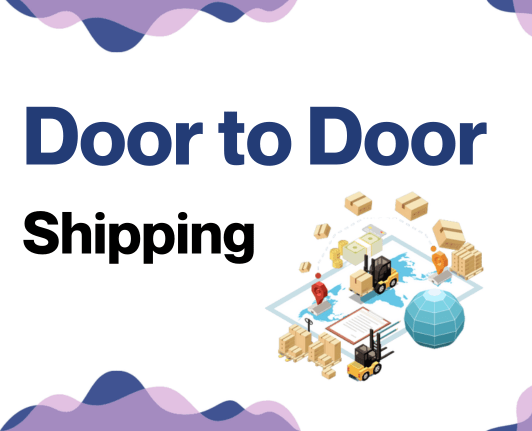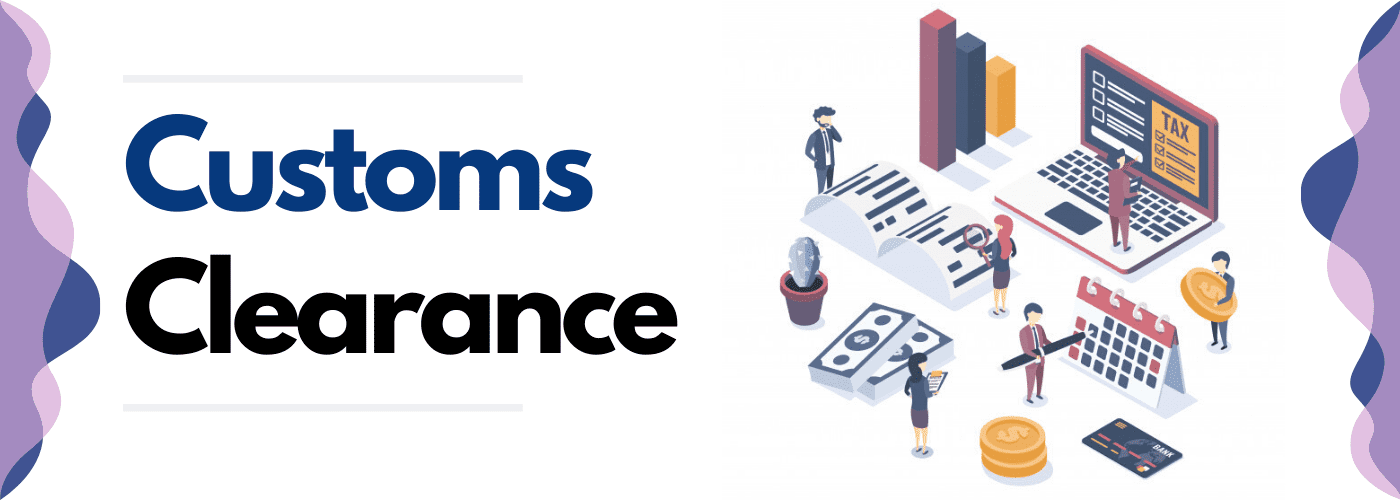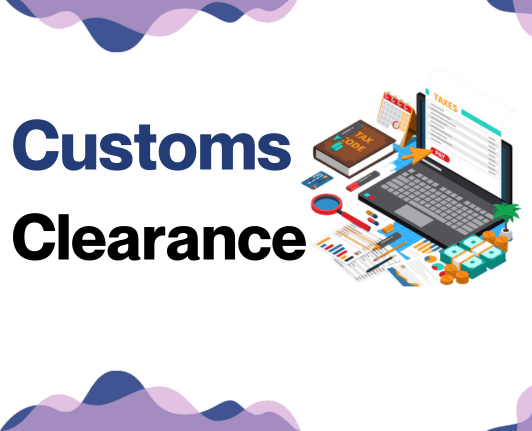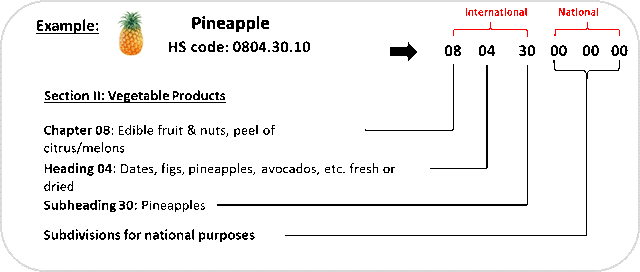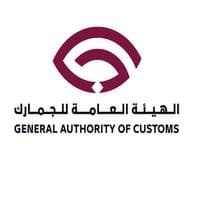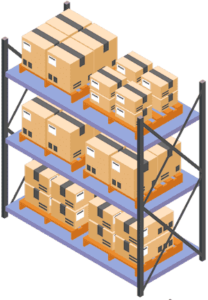Who knew that shipping freight could feel like decoding the Da Vinci Code? Especially when it comes to deciphering the real ins-and-outs of transit times, customs regulations, and grasp of rates between Qatar and South Africa. In this comprehensive guide, we will assist you in unfurling the complexities of international shipping. We'll untangle the labyrinth of different freight options—be it sea, air, rail, or road—and simplify the perplexing customs clearance procedures, duties, and taxes specific to these countries. Tailored advice for businesses to save time, money, and avoid legal hassles is the cherry-on-top. If the process still feels overwhelming, let DocShipper handle it for you! As a seasoned international freight forwarder, we transform the intricate shipping hurdles into a harmonious melody of success for your business.
Which are the different modes of transportation between Qatar and South Africa?
Battling distances and traversing borders - let's make sense of shipping between Qatar and South Africa. We're peering into the geography - time zones apart, vast oceans, multiple countries in between. Throw in your unique business requirements - you might realize that all routes don't lead to profits. The choices might seem overwhelming - but fret not. The key? Picking the right method that resonates with your own shipping needs, preventing headaches, and avoiding needless costs down the line. This guide is your compass, demystifying the complexities, and helping you steer clear of shipping missteps.
How can DocShipper help?
Shipping goods from Qatar to South Africa has never been easier than with DocShipper! Efficient, reliable, and timely - we excel at all things shipping. Finalize paperwork, manage customs clearance, or select the ideal transport - we've got you covered. Ready to get started? Connect with our consultants for a free estimate within 24 hours!
DocShipper Tip: Sea freight might be the best solution for you if:
- You're dealing with hefty quantities or large-scale goods. Sea freight is your go-to for maximizing space without stretching your budget.
- Your cargo doesn't have an urgent deadline, as sea freight typically has longer transit times compared to air or rail.
- Your shipping routes are between major ports, allowing you to leverage the extensive global network of sea shipping lanes.
Sea freight between Qatar and South Africa
Ocean shipping between Qatar and South Africa involves an intricate dance of economics, geography, and logistics. Deep ties in trade mark their connection - Qatar, with its abundant natural gas reserves, and South Africa, buzzing with gold, platinum, and other metals. Major players in the shipping ballet are the ports of Doha, Mesaieed and Ras Laffan in Qatar, with Durban and Cape Town from South Africa. Here, sea freight comes into its prime, being the cost-effective method to transport high-volume goods, despite the clock's unhurried hands.
But, with the cost-effectiveness of ocean shipping comes the quagmire of common difficulties that daunt businesses. Unfamiliar tariffs? Check. Complex customs regulations? Double-check. Missteps are common in this elaborate dance, but mastering the rhythm of best practices can ease the way. Grab your organization's hand, we'll wade through these waters together in this section, showing you how to twirl through paperwork and tap dance around potential troubles for a smooth shipping experience.
Main shipping ports in Qatar
Port of Hamad
Location and Volume: Located in Umm Al Houl, this port acts as a critical gateway to the Qatari market, with a shipping volume exceeding 1 million TEU in 2019.
Key Trading Partners and Strategic Importance: Principal trading partners include South Korea, China, India, and Oman. As a state-of-the-art automated port, it is part of the strategic Qatar National Vision 2030 plan.
Context for Businesses: If you're eyeing the Middle Eastern markets or intend to tap into the East-West trade, the Port of Hamad may be integral to your logistics, owing to its proximity to the market and connectivity to almost 40 ports worldwide.
Port of Doha
Location and Volume: The port of Doha spans across an area of 26.5 hectares and offers various facilities for the docking of vessels and storage of cargo, playing a vital role in Qatari trade.
Key Trading Partners and Strategic Importance: The port deals with a wide variety of shipping needs, including container shipments, perishable foods, and heavy equipment. Key trading partners are primarily neighboring countries within the Gulf Cooperation Council.
Context for Businesses: If you're dealing in perishable goods or heavy equipment, the Port of Doha is well-equipped for your handling needs, offering specialized facilities and warehousing solutions.
Port of Al-Ruwais
Location and Volume: Situated on the northern tip of Qatar, the port of Al-Ruwais plays a crucial role in servicing the needs of North Qatar, including nearby islands.
Key Trading Partners and Strategic Importance: Priority trading partners include countries from the MENA region. Its strategic location makes it a viable alternative for the northern parts of Qatar and the nearby islands.
Context for Businesses: If your business interests lie in Northern Qatar and the adjoining islands, Port of Al-Ruwais is an essential stepping stone for shipments, providing crucial connectivity that serves your geographical needs.
Please note: the links provided should direct you to official port websites. These sites offer an additional wealth of information and any changes or updates in port status, activities, and features.
Main shipping ports in South Africa
Port of Durban
Location and Volume: Located on the African east coast, in KwaZulu-Natal, the Port of Durban is South Africa's main cargo and container port, with an annual shipping volume of over 2.5 million TEU's.
Key Trading Partners and Strategic Importance: China, India, the USA, Germany, and Saudi Arabia are the key trading partners. Durban serves a vital role as the gateway to South Africa's industrial hub and is home to one of the largest container terminals in the southern hemisphere.
Context for Businesses: If you plan on moving high volumes of goods into or out of South Africa, especially via sea freight, the Port of Durban could be a pivotal part of your strategy, with its extensive cargo handling facilities and direct links to major local and international trading routes.
Port of Cape Town
Location and Volume: Situated along one of the world's busiest trade routes, in the southwestern most tip of Africa, the Port of Cape Town handles around 900,000 TEUs annually.
Key Trading Partners and Strategic Importance: Key trading partners are China, USA, Germany, India, and the UK. The port holds strategic importance for fruit exports and oil bunkering.
Context for Businesses: For businesses in the agriculture sector, particularly those in fruit export, Port of Cape Town offers robust support. It is also strategically located if your business involves oil bunkering or supplies to passing ships.
Port Elizabeth
Location and Volume: Located in the Eastern Cape Province, the Port of Elizabeth handles around 100,000 TEUs annually.
Key Trading Partners and Strategic Importance: Primary trading partners include Japan, Germany, and the UK. As one of South Africa's major automotive industry hubs, the port is a pivotal gateway for the export of vehicles and automotive components.
Context for Businesses: If your business is in the automotive industry looking to transport products to Europe or Asia, the Port of Elizabeth's strategic location and automotive export facilities may be ideal for your logistics strategy.
Richards Bay
Location and Volume: Located on the east coast of South Africa, Richards Bay is the country's largest port, and handles over 76 million tons of cargo annually.
Key Trading Partners and Strategic Importance: Richards Bay's primary trading partners include China, India, and Mozambique. The port's strategic importance lies in its export of coal and other bulk commodities.
Context for Businesses: Richards Bay may be the best option for businesses that move large volumes of coal and other commodities, thanks to its expansive bulk freight handling capacity.
Saldanha Bay
Location and Volume: Saldanha Bay, located on South Africa's west coast, is the country's deepest and largest natural port. It's primarily dedicated to the export of iron ore, shipping over 60 million tons per annum.
Key Trading Partners and Strategic Importance: The main trading partners are primarily China and Japan. Its strategic importance lies in the massive iron ore export operations it supports, and its location on a major global shipping route.
Context for Businesses: If your operations involve the mining sector, especially iron ore, the Saldanha Bay Port could very well be a cornerstone of your shipping strategy, given its expertise and dedicated facilities for iron ore shipping.
Port of East London
Location and Volume: Situated on the southeast coast of South Africa, the Port of East London handles more than 70,000 TEU annually.
Key Trading Partners and Strategic Importance: East London trades predominantly with China, Japan, and Germany. This port houses a major Daimler AG assembly plant, focusing largely on the export of automotive components and vehicles.
Context for Businesses: If your business involves automotive manufacturing and you're shipping out of the Eastern Cape, integrating the Port of East London into your strategy may facilitate efficient logistics and cost-effective export routes.
Should I choose FCL or LCL when shipping between Qatar and South Africa?
Understanding whether to ship by Full Container Load (FCL) or Less than Container Load (LCL), also known as consolidation, is a key decision when shipping between Qatar and South Africa. The choice you make could significantly influence your cost, delivery schedule, and the overall effectiveness of your shipping strategy. In this section, we'll delve into the nuances of FCL and LCL, providing clear guidance in everyday language to empower you to make an informed, strategic shipping decision tailored to your unique needs. Get ready to sail through the complexities of sea freight!
LCL: Less than Container Load
Definition: LCL (Less Than Container Load) shipping refers to a method of transport where your cargo doesn't occupy a whole container. Instead, several shippers' cargo is consolidated into one container for the journey.
When to Use: LCL is the perfect choice for lower volume shipments that can't fill a whole container, usually up to 14 to 15 CBM (cubic meters). It offers a more flexible and cost-effective alternative because you only pay for the space your cargo occupies.
Example: Imagine, for instance, you're an electronic manufacturer in Qatar shipping 10 CBM of components to South Africa. As your shipment is less than 15 CBM, using the LCL shipment method allows you to share container space with other shippers, maximizing economy and efficiency.
Cost Implications: LCL shipping rates are typically based on volume (per CBM) or weight (per kilogram) of the cargo, whichever is greater. While this method may incur additional handling costs for consolidating and deconsolidating goods, it generally proves to be a more affordable solution for smaller volume shipments compared to booking a full container.
FCL: Full Container Load
Definition: FCL (Full Container Load) shipping is a type of ocean freight transportation where a company has exclusive rights to a single, entire container—be it a 20'ft or 40'ft container, depending on their needs.
When to Use: FCL is an advantage when you're shipping high volume goods, say more than 13/14/15 CBM, spanning from Qatar to South Africa. Choosing FCL ensures your goods are safely sealed inside your assigned container, thus bypassing potential damages that might occur from shared space.
Example: Consider a manufacturing company in Doha exporting large machinery parts to Johannesburg, with a total cargo volume of 18 CBM. Here, FCL shipping proves to be the ideal choice. They vie for an exclusive 20'ft container, ensuring their parts are secure and separate from other goods.
Cost Implications: While securing an FCL container might seem pricier initially, it can prove to be economical for large-volume shipments. Plus, the prospect of an all-inclusive FCL shipping quote, which incorporates fees for the exclusive use of a container, can provide a clearer picture of the budget while ensuring a safer transit for your goods.
Unlock hassle-free shipping
Need help to decide between consolidation or full container shipping from Qatar to South Africa? Trust DocShipper, your professional freight forwarder, dedicated to making cargo shipping seamless. Our team of ocean freight experts assess your cargo's size, type, and delivery deadlines to help you make an informed decision. Leave the hassles to us and focus on your core business. Ready for a smooth shipping journey? Contact us today for a free estimation of your transportation costs!
How long does sea freight take between Qatar and South Africa?
Sea freight between Qatar and South Africa typically averages around 25 to 35 days. However, keep in mind that transit times can vary significantly depending on factors like the specific ports used, the weight of the cargo, and the type of goods being transported. To get a more accurate estimation based on your specific circumstances, consider reaching out to a reliable freight forwarder like DocShipper for a custom quote.
As for the average transit times between various ports in the two countries, here's a quick look:
| Ports of Qatar | South African Ports | Average Transit Time (Days) |
| Hamad Port | Durban | 28 |
| Hamad Port | Richie's Bay | 30 |
| Hamad Port | Cape Town | 32 |
| Hamad Port | Port Elisabeth | 29 |
*Please note that these are approximate times and actual transit may vary.
How much does it cost to ship a container between Qatar and South Africa?
Establishing the shipping cost per CBM from Qatar to South Africa can be a conundrum due to various influencing properties. Ocean freight rates particularly fluctuate based on the Point of Loading, Point of Destination, the carrier choice, nature of your goods, and monthly market trends. A ballpark figure could range extraordinarily, but it's crucial to understand that specific estimates can't be pinned down without analyzing these factors. Rest assured, our shipping specialists buckle down to secure the best value tailored to your needs by quoting each project on an individual basis. Our commitment: turning the complex shipping process into a seamless adventure for your business.
Special transportation services
Out of Gauge (OOG) Container
Definition: An OOG container is a specialized shipping option for oversized loads that extend beyond the standard container dimensions.
Suitable for: This method is best for transporting goods that are large, heavy, or both, and cannot fit into standard containers due to their irregular dimensions — Out of gauge cargo.
Examples: This can include large machinery, industrial equipment, construction materials, or windmill propellers.
Why it might be the best choice for you: If you're dealing with oversized, heavy, or uniquely shaped cargo, the OOG container option offers the flexibility you need without splitting your shipment, making it a seamless solution for your logistics operations.
Break Bulk
Definition: Break bulk shipping is a method where goods are loaded individually rather than in containers.
Suitable for: It's a go-to choice for goods that are large and cannot be transported in traditional containers but can be handled individually – break bulk.
Examples: Goods often transported via break bulk include boats, turbines, or factory components.
Why it might be the best choice for you: Break bulk can streamline your shipping process if you're tasked with moving sizable loose or separate cargo that can withstand exposure to conditions on the open deck.
Dry Bulk
Definition: Dry bulk shipping involves the transportation of homogenous goods loaded directly into a ship's hold.
Suitable for: It's fitting for handling loose cargo load like grains, coal, and other commodities that can be poured.
Examples: Popular dry bulk goods include minerals, ores, coal, cement, grains, or sugars.
Why it might be the best choice for you: If you're in the business of large-scale shipping of loose, dry commodities, then the dry bulk shipping technique is a resourceful and efficient solution that can minimize packaging and handling costs.
Roll-on/Roll-off (Ro-Ro)
Definition: Ro-Ro is a method where vehicles, trailers, or vessels are driven on and off a specialized ro-ro vessel at ports.
Suitable for: It's the optimal method for the transportation of wheeled cargo and heavy machinery.
Examples: Automobiles, trucks, semi-trailer trucks, trailers, and railroad cars are commonly shipped via Ro-Ro.
Why it might be the best choice for you: If your business revolves around relocating vehicle fleets or heavy machinery, the Roll-On/Roll-Off method simplifies transport, reducing the need for dismantling and reassembly while ensuring the integrity of your assets.
Reefer Containers
Definition: Reefer containers are refrigerated shipping containers used to transport temperature-sensitive goods.
Suitable for: They are most suitable for the shipping needs of perishable goods that need temperature control throughout the transport process.
Examples: Common types of cargo for reefer containers include fruits, vegetables, meats, dairy products, or pharmaceuticals.
Why it might be the best choice for you: If you deal with temperature-sensitive or perishable goods, reefer containers will help maintain the optimum conditions for your products, ensuring their safe delivery and maintaining their quality.
For a detailed analysis of the best shipping option for your specific cargo between Qatar and South Africa, we invite you to contact us at DocShipper. Our team is ready to provide you with a free shipping quote in less than 24 hours.
DocShipper Tip: Air freight might be the best solution for you if:
- You're up against the clock or have a non-negotiable delivery date. Air freight is your fastest bet for meeting tight timelines.
- Your shipment is on the smaller side, falling below 2 CBM. Air freight is particularly well-suited for compact cargo loads.
- Your goods are destined for locations that aren't well-served by maritime or rail options. Air freight expands your reach by connecting you to a vast array of international airports.
Air freight between Qatar and South Africa
Moving goods between Qatar and South Africa? Speed and reliability make air transport a fantastic choice, especially for small, value-packed shipments. Consider the tech industry: laptops and smartphones wing their way efficiently, their high cost justifying the airfare.
However, we frequently observe some speed bumps. Picture this: you're packing a feather-light package, and you calculate shipping costs using its actual weight. But surprise! When the carrier uses the dimensional weight (a formula including size and weight), your bill skyrockets. Watch out for hidden traps like these. Not grasping these key insights might sneakily inflate your expenses. But don't worry, we've got your back. In this guide, we'll break down common foibles to steer you clear of those excess charges.
Air Cargo vs Express Air Freight: How should I ship?
Struggling to pick between Air Cargo and Express Air Freight for your Qatar-South Africa route? We get it! In simplest terms, with air cargo, your goods will take a flight in an airline alongside other shipments. On the other hand, express air freight is like booking a personal jet for your goods; they fly in a dedicated plane. Got it? Great, let's dive into the nitty-gritty of these two options.
Should I choose Air Cargo between Qatar and South Africa?
Air Cargo between Qatar and South Africa can prove cost-effective and reliable, especially once your freight reaches 100/150kg (220/330 lbs). Major players like Qatar Airways Cargo and South African Airways Cargo link these countries. Although transit times can be longer due to fixed schedules, the reliability of air cargo may justify this for your budget. Trade-offs abound in freight forwarding; your decision may well lean towards air cargo considering your freight's weight and budget constraints.
Should I choose Express Air Freight between Qatar and South Africa?
Express Air Freight is a boon for shipping small, urgent cargo. It utilizes dedicated flight paths with no passengers, purely focused on freight. If your cargo weighs less than 100/150 kg (220/330 lbs) or takes up less than 1 CBM, you'll find services like FedEx, UPS, and DHL streamline your Qatar-South Africa logistics. They could provide expedited delivery, robust tracking, and reliable custom clearance, mitigating possible shipping hiccups. So, if immediate delivery is your priority, express air freight might be tailor-made for your needs.
Main international airports in Qatar
Hamad International Airport
Cargo Volume: With an annual cargo capacity of 1.4 million tonnes, Hamad International is a major hub for freight operations in the Middle East region.
Key Trading Partners: Notable trading partners include Asia, Europe, Australia, North America, and various countries within the Middle East.
Strategic Importance: This airport is home to Qatar Airways Cargo, the world’s third largest international cargo carrier. It also serves as a critical transshipment hub for air freight between East and West due to its strategic location.
Notable Features: The airport's state-of-the-art cargo facility is equipped with temperature-controlled storage and dedicated sections for valuable goods, live animals, and dangerous goods.
For Your Business: If your business specializes in perishable goods, pharmaceuticals, or high-value items, Hamad's advanced infrastructure and wide-ranging global connections could streamline your cargo operations.
Doha International Airport
Cargo Volume: Though it has largely been replaced by the newer Hamad International Airport, Doha International still handles a small portion of the country's air cargo traffic.
Key Trading Partners: Trading partners are similar to those of Hamad, including Asia, the Middle East, Europe, North America, and Australia.
Strategic Importance: Previously the only international airport in Qatar, Doha International now caters to general aviation and cargo traffic. It continues to play a supportive role in Qatar's cargo operations.
Notable Features: Despite being the older of the two, it offers comprehensive cargo services.
For Your Business: Reaching a more niche set of destinations, Doha International could offer your business additional options for particular shipping routes.
Note: These are the two prominent international airports in Qatar handling cargo. Hamad International is the primary airport for most cargo operations, having superseded Doha International in recent years.
Main international airports in South Africa
O.R. Tambo International Airport
Cargo Volume: O.R. Tambo International airport manages nearly 83% of South Africa's international air cargo.
Key Trading Partners: Major partners include China, United States, Germany, India, and the United Kingdom.
Strategic Importance: Being the largest and busiest airport in South Africa, it's a central hub for cargo transport across Africa and the rest of the world.
Notable Features: High security cargo handling facilities and a dedicated 'Cargo Village' for freight forwarding.
For Your Business: It can offer unparalleled access to domestic, continental, and international markets due to its excellent connectivity.
Cape Town International Airport
Cargo Volume: Handles approximately 10% of South Africa's air cargo, with a capacity of more than 100,000 metric tons per year.
Key Trading Partners: Mainly exports to European countries, with some traded with Asian markets.
Strategic Importance: Located in the country's second-most populous city, it acts as a pivotal connection point for international cargo.
Notable Features: Known for its robust cold-chain logistics infrastructure, making it ideal for perishable goods.
For Your Business: This airport could be especially advantageous for your goods requiring temperature-controlled transport.
King Shaka International Airport
Cargo Volume: Handles around 7% of South Africa's total air cargo.
Key Trading Partners: Major trading partners include China, Germany, the USA, and the UK.
Strategic Importance: It's located in the city of Durban, providing a strategic location for exporting goods to international markets.
Notable Features: Advanced security and handling facilities and supports a range of cargo, including live animals and hazardous materials.
For Your Business: Its wide range of special cargo-handling capabilities can let you ship varied types of goods.
Port Elizabeth Airport
Cargo Volume: Around 0.4% of the country's total cargo volume.
Key Trading Partners: Countries in Africa, Asia, Europe, and America.
Strategic Importance: It serves as a strategic point for accessing the Eastern Cape's industrial zone.
Notable Features: Specializes in handling smaller cargo shipments, with personalized attention to each package.
For Your Business: Ideal for businesses that frequently move smaller shipments and prioritize personalised handling.
East London Airport
Cargo Volume: Handles relatively smaller volumes compared to others, but is steadily growing.
Key Trading Partners: Primarily African countries, with some trade with Europe, Asia, and America.
Strategic Importance: Its location gives direct access to the Eastern Cape's industrial sector.
Notable Features: Specialises in handling smaller cargo shipments with high precision.
For Your Business: If your business conducts frequent small-sized shipments, this could be an essential part of your South African shipping strategy.
How long does air freight take between Qatar and South Africa?
Typically, an air freight shipment between Qatar and South Africa averages around three to five days. However, the exact transit time can vary dramatically depending on the specific ports of exit and entry, the weight and nature of your shipment. Keep in mind, for items that need special handling, additional time may be required. For definitive timelines, it's recommended to consult a freight forwarder like DocShipper. Their expert guidance can help to navigate the intricacies and specificities that often come up in international logistics.
How much does it cost to ship a parcel between Qatar and South Africa with air freight?
Air freight costs between Qatar and South Africa widely range from $1 to $5 per kilogram. It's challenging to provide an exact figure since various factors come into play--from airport departure and arrival distances, package dimensions, weight, to the nature of the goods. Rest assured, our team is committed to offering you the most competitive rates, applying personalized quotes for every unique shipment. Don't let this uncertainty deter you, allow us to provide you with the best cost suitable for your shipping needs. Contact us now and receive a free quote in less than 24 hours.
What is the difference between volumetric and gross weight?
In shipping, 'Gross Weight' refers to the complete weight of your shipment, including all packaging and pallets. On the other hand, 'Volumetric Weight' is a weight estimate that considers how much space a package occupies in relation to its actual weight.
For Air Cargo Freight, the volumetric weight is calculated by multiplying the length, width, and height of your package (in centimeters) and then dividing that product by 6,000. In Express Air Freight services, the division factor is 5,000 instead. Let's imagine a box that measures 40cm x 40cm x 40cm, with a gross weight of 20kg. In Air Cargo Freight, the volumetric weight would be (40x40x40) / 6000, equaling 10.67kg (23.5 lbs). However, the same box in Express Air Freight would have a volumetric weight of (40x40x40) / 5000, or 12.8kg (28.2 lbs).
It's crucial to understand these calculations as freight charges are often based on the higher weight—be it gross or volumetric. This ensures an efficient use of space, especially important in air shipments where space is limited and valuable.
DocShipper tip: Door to Door might be the best solution for you if:
- You prioritize a smooth, hassle-free shipping experience from start to finish. Door-to-door services manage the entire journey, from initial collection to ultimate delivery.
- You appreciate streamlined communication and would rather deal with one person. A dedicated agent is usually assigned to oversee every detail of your door-to-door shipment.
- You want limit the number of touchpoints for your cargo. Door-to-door services reduce the frequency of transitions between various transport methods, thereby lowering the likelihood of damage or loss.
Door to door between Qatar and South Africa
Navigating the logistics between Qatar and South Africa? Door-to-door shipping, a breeze in international freight, delivers your goods straight from origin to destination with no legwork. Offering streamlined processes, cost predictability, and minimal hassle, it's a win-win for businesses! Exciting, isn't it? So, let's dive into the nitty-gritty of door-to-door shipping on this unique route.
Overview – Door to Door
Shipping from Qatar to South Africa shouldn't mean being buried under paperwork! As a business, your focus should be on growth, not transportation barriers. Choose Door to Door shipping - the all-inclusive, hassle-free solution to your complex shipping needs. Unload the strain of customs and logistics onto us, while you simply wait for your goods to arrive. Despite the slightly higher cost, it remains our clients' preferred choice. It's not without reason - keep reading to unravel how Door to Door shipping is revolutionizing international trade, right from handling regulations to delivering shipments, making it easier than ever. Wherever you are, whatever you ship - we've got you covered!
Why should I use a Door to Door service between Qatar and South Africa?
Ever had the nightmare of navigating a labyrinth of logistics alone? Fret not! Opting for a Door to Door service for your shipments between Qatar and South Africa could be your perfect stress pill, and here’s why:
1. Simplicity: With Door to Door, you whisk away the logistical headache. From goods pickup at the origin to delivery at the destination - it's all taken care of. No more sleepless nights over shipment procedures!
2. Timely delivery: If you're in the race against time, this service is your secret weapon. The freight forwarder manages the entire process efficiently, ensuring faster and painstakingly timely deliveries. Look forward to clearing your calendar of tracking shipments!
3. Specialised care: Have complex cargo? It's handled with kid gloves. The door to door service guarantees expert care, doting on your cargo from the first mile to last.
4. Convenience: Imagine just sipping your coffee while your cargo trucks along to its destination. The service covers land transportation at both ends which considerably reduces transit-related hassles.
5. Peace of mind: Finally, you get a full bill of transparency. There are no hidden costs, everything is covered in your initial quotation. This means you can allocate your resources confidently, without unexpected surprises.
Say goodbye to exasperation and hello to easy logistics with Door to Door service!
DocShipper – Door to Door specialist between Qatar and South Africa
Experience hassle-free shipping from Qatar to South Africa with DocShipper. Our expert team manages all aspects of freight forwarding, including packaging, transportation, customs clearance, and choice of shipping method. With a dedicated Account Executive at your disposal, you'll tread through the often complex process with ease. Get in touch for your free estimate within a day or consult with our experts at no cost at all. Shipping made simple with DocShipper.
Customs clearance in South Africa for goods imported from Qatar
Navigating customs clearance – the process of importing goods across borders – can be a complex journey, filled with unexpected pitfalls like hidden fees and charges. Particularly when importing goods from Qatar into South Africa, understanding customs duties, taxes, quotas, and licenses is essential to avoid the risk of your shipment getting stuck in customs. DocShipper is here to simplify this process for you, helping you to swiftly navigate these complexities for any kind of goods around the globe. Our upcoming sections will provide a deeper dive into these essential areas. Ready to budget your project? Contact our team with the origin of your goods, their value, and the HS Code. Let’s ensure your goods move smoothly from Qatar to South Africa.
How to calculate duties & taxes when importing from Qatar to South Africa?
Calculating customs duties can sometimes feel like threading a needle in the dark, especially if you aren't familiar with the terms involved. Fear not! It's simpler than it sounds. Primarily, there are five components to understand the equation - the country of origin, the HS Code (Harmonized System Code), the Customs Value, the Applicable Tariff Rate, and various other taxes and fees applicable to the products you wish to import.
The country of origin refers to where the goods you're shipping originated from - in this case, it's the nutrient-rich dunes of Qatar. Identifying this correctly is your first crucial step and significantly impacts the total cost of customs duties and taxes. The geographical distance and diplomatic relations between countries can greatly affect tariffs and trade agreements. So, having precise information about the country of origin is absolutely pivotal in estimating accurate import duties and taxes. Let’s set sail on this arduous journey with clarity and courage!
Step 1 - Identify the Country of Origin
Knowing the good's origin country can provide more clarity than meets the eye! It brings precision to the importing process, here's why:
1. Variance in Duties: Not all products bear the same duties. The goods' country of origin significantly influences these rates.
2. Trade Agreements: South Africa and Qatar have mutual agreements that can reduce or eliminate import duties, making it crucial to identify the origin.
3. Specific Restrictions: The importing country may have unique restrictions on certain products from specific countries.
4. Compliance with Regulations: Correct origin identification ensures regulatory compliance, prevents delays, and avoids potential penalties.
5. Close Monitoring: Authorities watch certain countries more closely for specific goods, affecting your shipment's timeline.
Don't overlook Qatar's agreement with the South African Customs Union (SACU)! It carves out beneficial terms for trading certain goods, providing your business with possible economic advantages. Be aware of South Africa’s restrictions on textiles and agricultural produce from Qatar as well – a little foreknowledge can save a gigantic headache!
Stay sharp and double-check the Country of Origin. It equips your business to confidently navigate customs, ensures smooth sailing of your shipment, and can significantly optimize your cost structure. So, before procuring the HS Code, mark this as your first checkpoint!
Step 2 - Find the HS Code of your product
The Harmonized System (HS) Code is an internationally recognized coding system, used to classify the traded goods and define the duties and taxes for each imported/exported item. It streamlines the customs clearance process and helps in the standardization and harmonization of trade between countries by making it uniquely identifiable.
Should you need to identify the HS Code of your product, your supplier is typically the most viable source, given their familiarity with the regulatory aspects of the import field.
However, if this is not an option, fear not. We will provide you with an easy step-by-step process to find your HS Code. First, you'll want to use an HS lookup tool. One such tool conveniently linked here is the Harmonized Tariff Schedule.
Upon reaching the webpage, simply input your product name in the search bar. After conducting the search, pay special attention to the Heading/Subheading column. This is where you will be able to find your relevant HS Code.
It's important to note: Accuracy in selecting your HS Code is paramount. An inaccurate or false HS Code could result in unwanted hassle such as clearance delays, and potentially hefty fines due to incorrect product classification.
Here's an infographic showing you how to read an HS code.
Step 3 - Calculate the Customs Value
Shipping from Qatar to South Africa? One critical step to understand is how the customs value of your goods is calculated. This isn't simply the commercial value of your products, oh no, there's more to it. Customs Value is your product's price plus the cost of international shipping plus insurance. It's officially known as the CIF value, not the Caped Crusader, but 'Cost, Insurance, and Freight'. For example, if your product costs $1000, the shipping is $100, and insurance $50, the CIF is $1150. This $1150 is the customs value, the number you need when working with customs in South Africa, not the mere $1000 product value. So, think broad, think CIF when it comes to customs, remember every little dollar counts in international trade.
Step 4 - Figure out the applicable Import Tariff
An import tariff is essentially a tax imposed on imported goods with the purpose of protecting domestic businesses. South Africa uses a customs duty tariff which includes Most Favored Nation (MFN) duties that apply to all World Trade Organization member countries, including Qatar.
To identify the applicable import tariff for goods imported from Qatar into South Africa, you'll need to start by finding the Harmonized System (HS) code for your product. This 6-digit code classifies products in international trade being transported.
For instance, let's take a look at the process for a plain cotton T-shirt, which carries the HS code 610910. First, visit the South African Revenue Service (SARS) website and navigate to their Customs Tariff Book section. After keying in the HS code, you'll find the specific duty rate, say 20% in our example.
Next, you'll need to calculate the Cost, Insurance, and Freight (CIF) value in USD. For example, if your T-shirts cost $1000 (FOB value), with insurance and freight totaling $200, your CIF value would be $1200.
Finally, multiply the CIF value by the tariff rate to obtain the import duty. Here, that would be $1200 x 20% = $240.
Remember, understanding these costs beforehand can significantly ease the stress of international trade and help anticipate business expenses more accurately.
Step 5 - Consider other Import Duties and Taxes
In addition to standard tariffs, South Africa has other import duties which may apply based on your product and its country of origin. Excise duty might come into play if your goods from Qatar are luxury items, like jewelry or alcohol. An anti-dumping duty may be levied if your product is imported at a cost considerably lower than its market value to protect local manufacturers.
The most significant duty to be aware of is VAT. In South Africa, the standard VAT rate is approximately 15% of the Cost Insurance and Freight (CIF) value plus any previous taxes (like the standard tariff and other duties). Here's a simplified formula:
VAT = (CIF + Standard Tariff + Other Duties) 15%
For example: if you're shipping ceramics with a CIF value of $1,000, and you've incurred $200 in standard tariff and $50 in excise duty, your VAT will be:
VAT = ($1,000 + $200 + $50) 15% = $187.5
Remember, rates may vary, and this should only be used as a guideline. Understanding these additional costs upfront can help avoid unexpected charges upon arrival in South Africa, ensuring a smoother transition for your goods.
Step 6 - Calculate the Customs Duties
Understanding customs duties is critical to effectively shipping goods from Qatar to South Africa. This involves calculating based on the customs value, VAT, and any relevant taxes like anti-dumping taxes or Excise Duty.
Consider a shipment with a customs value of $1,000 without VAT. You'd just need to apply the customs duties rate, e.g., 10% - this gives you $100 in customs duties.
Expanding on this, let's say you have the same customs value of $1,000, but now with a VAT rate of 15%. First, add the customs duties to the customs value, then calculate the VAT. Here, that's $1,100 15% = $165 in VAT, with total expenses of $265.
Lastly, if you have the same shipment but with an anti-dumping tax of 20% and Excise Duty of 5%, first add up the three duties or taxes to get a total of 35%. Therefore, your charge is $1,000 35% = $350.
Remember, these calculations can become complex due to variables like fluctuating tax rates or various taxes on different goods. Don't risk paying more than necessary. Docshipper can handle every step of the customs clearance process, ensuring accurate calculations and payment of your customs duties. Contact us for a free, no-obligation quote within 24 hours!
Does DocShipper charge customs fees?
At DocShipper, we assume our role as custom brokers in Qatar and South Africa to handle your customs clearance. However, it's essential to differentiate between these clearance charges and the customs duties/taxes directly payable to the government. Our job is to ensure your shipment crosses borders smoothly and all relevant documents from the customs office reflect the correct charges. Hence, you'll only foot the precise charge indicated by the customs office, not a penny more, with proof for every payment made. This clear distinction eliminates the worry of clandestine, unexpected expenses during your shipping process.
Contact Details for Customs Authorities
Qatar Customs
Official name: General Authority of Customs, Qatar
Official website: https://www.customs.gov.qa/
South Africa Customs
Official name: South African Revenue Service (SARS)
Official website: www.sars.gov.za
Required documents for customs clearance
Tackling customs clearance can be daunting, especially when it's about documentations. Your Bill of Lading, Packing List, Certificate of Origin, and CE standard Documents of Conformity are must-haves. Understanding these documents is crucial in avoiding delays, fines, or even forfeited goods. We're here to demystify them for you, making your shipping a breeze.
Bill of Lading
Navigating the ocean of customs can seem arduous, but a strong anchor like a Bill of Lading makes it simpler. If you're shipping between Qatar and South Africa, this document is your key. It's proof of ownership transition and plays a gargantuan role in seaborne trade similar to Air Waybill (AWB) in air cargo. Let's talk about the Electronic or 'Telex' release. This innovative method allows faster document transfer, reducing tedious waiting times - a game-changer for urgent shipments. Remember, every detail on your Bill of Lading must mirror the actual cargo to avoid customs issues. So next shipment, have your Bill of Lading ready and sail smoothly through the customs sea.
Packing List
A Packing List serves as the trusty sidekick in your shipping journey between Qatar and South Africa. Imagine it as a detailed inventory of the goods you’re shipping. Now, when creating this crucial document, precision is paramount. Whether you're shipping a planeload of pashminas or a single container of spices, the customs officials of both nations will scrutinize it to verify the weight, dimensions, and specific nature of the goods.
Say you're sending a mixed container of machinery parts by sea freight. Each item, right down to the smallest nut or bolt, should find mention in this exhaustive list. This aids in efficient customs clearance, preventing surprises, delays, or even penalties when your goods reach Cape Town from Doha. And it's just the same for air freight! It’s your responsibility as the consignor, so make it count – both for your sanity and your bottom line!
Commercial Invoice
When exporting from Qatar to South Africa, your Commercial Invoice should be accurate and highly detailed. It plays a pivotal role in customs clearance - it's essentially your product's passport. Every line item must tally with the actual goods, place of origin, and value. Be sure to include your HS codes; they help identify products for tariff and regulations and can prevent costly mistakes. Take, for example, a shipment of premium Persian carpets. Their description, material, and each carpet's value should be clearly stated, to avoid complicating the customs process. An improperly filled invoice could lead to issues ranging from delays at customs to misdeclaration penalties. Compare it with your packing list and other shipping documents for consistency, as customs might cross-check these details. Your diligence here could speed up your shipment's journey from Doha to Johannesburg.
Certificate of Origin
The Certificate of Origin (CO) is a vital player in your shipping from Qatar to South Africa. Think of it as your goods' ID, verifying their 'birthplace'. Mentioning the country of manufacture on the CO could unlock preferential customs duty rates from the South African Revenue Service. For instance, if your goods were manufactured in Doha, a well-documented CO can help paint a clear picture of origin, potentially reducing trade barriers and duty rates. It’s these small details that often make a big difference in the efficiency and cost of international shipping. So, always ensure your paperwork, like the CO, is in check to ease your customs clearance process. Remember, every penny and minute counts in logistics!
Get Started with DocShipper
No more customs headaches! At DocShipper, we understand how complex and demanding the customs clearance process can be. Our specialists are here to ease your stress, handling every step end-to-end for your Qatar-South Africa freight. We ensure fast, compliant and hassle-free clearance. Ready for smoother shipping? Reach out now - we offer a free quote in less than 24 hours.
Prohibited and Restricted items when importing into South Africa
Knowing what you can't ship into South Africa is as critical as understanding the customs procedures. Even minor missteps can lead to delays, fines, or seized goods—headaches no business needs. Let's unpack the list of prohibited and restricted items to keep your cargo sailing smoothly through South African customs.
Restricted Products
- Firearms and ammunition: You need to secure a permit from the South African Police Service.
- Medication: A permit from the South African Health Products Regulatory Authority is required.
- Plants and plant products: You must seek a permit from the Department of Agriculture, Land Reform, and Rural Development beforehand.
- Food products: Get a permit from the Department of Health before shipping these items.
- Pets and other live animals: A permit from the Department of Agriculture, Land Reform, and Rural Development is a must.
- Alcohol and tobacco: Secure a permit from the South African Revenue Service first.
- Chemicals: You need a permit from the Department of Environmental Affairs.
- Broadcasting equipment: An Independent Communications Authority of South Africa permit is mandatory.
- Antiquities and artwork: Before shipping these, a permit from the Department of Arts and Culture is necessary.
- Electronic goods: Ensure you have a permit from the National Regulator for Compulsory Specifications.
Prohibited products
- Narcotics and illegal substances
- Unlicensed firearms and ammunition
- Explosives and fireworks
- Counterfeit goods and currency
- Animal products from endangered species
- Certain plants and plant products
- Second-hand motor vehicles older than one year
- Gold coins, coin, and stamp collections
- Cigarette lighters in the shape of firearms
- Organic solvents
- Certain chemicals and biological substances
- Poisonous substances without a permit
- Certain harmful micro-organisms, pests, and bacteria
- Ingestible items not fit for consumption
- Goods offensive to the state or public morality.
Are there any trade agreements between Qatar and South Africa?
Yes, there's the potential for increased trade interactions between Qatar and South Africa, thanks to ongoing discussions to establish a bilateral Free Trade Agreement. While this is not yet implemented, the dialogue itself reflects a burgeoning commercial relationship with potential benefits for forward-thinking businesses like yours. Watch this space for infrastructure projects too, such as upcoming railway lines, for exciting opportunities in the cross-border shipping scene. Familiarize yourself with these evolving dynamics to unlock new doors in your international freight forwarding operations.
Qatar - South Africa trade and economic relationship
Trade links between Qatar and South Africa have blossomed over years, rooted in mutual interests and the desire for economic diversification. In the early 2000s, Qatari investments in South Africa started rebounding, particularly in manufacturing and telecom sectors. Fast forward to today, Qatar is a significant investor in South Africa's economy, with an investment portfolio worth around $15 billion. Key sectors include oil and gas, real estate, and mining. The reciprocal relationship has evolved too, with South Africa exporting $168 million worth (2022 data) of goods to Qatar. Major commodities include automobile parts, machinery, and agro-food products. This enriching historical and economical context suggests vast potential for both countries to bolster their trade ties even further.
Your Next Step with DocShipper
Moving goods across continents can feel like taming a beast. From customs clearance to sorting out the intricacies of transport arrangements - there's a lot to juggle. At DocShipper, we understand your pain. Our team of logistics gurus are at your disposal, ready to make shipping from Qatar to South Africa a breeze. Don’t sweat the logistics - that’s our job. Reach out today and let’s get those goods moving!
Additional logistics services
Explore more with DocShipper! We handle your supply chain end-to-end, offering services beyond standard shipping and customs, for a complete, hassle-free logistics experience.
Warehousing and storage
Finding the right warehousing solutions in Qatar and South Africa can feel like an uphill trek, especially when your goods need precise conditions like temperature control. Don't sweat it, we've got you covered. For more wisdom on warehousing that's as cool (or warm) as your goods need, check out our dedicated page: Warehousing.
Packaging and repackaging
Meeting the shipping standards of both Qatar and South Africa is crucial. With our packaging and repackaging service, your goods, be it fragile ceramics or hefty machinery, are treated with utmost care. Imagine not stressing about your precious Murano glass vases reaching falsely packed - we ensure they're as secure as in your hands. Choose reliability and ensure your products always make the journey safely.
Cargo insurance
Every shipping endeavor involves risks. Incidents such as theft, loss, or damage to your goods can all occur. That's where transport insurance intervenes, covering mishaps way beyond a fire insurance’s limited scope. Think of weather-related accidents at sea or goods damaged in transit by road. For peace of mind, consider it like your personal shield against such unpredictable events. Business to business, who wouldn’t want that extra security?
Supplier Management (Sourcing)
Seeking the perfect supplier for your shipment from Qatar to South Africa? DocShipper helps you source your goods from Asia, East Europe and beyond, taking the hassle out of procurement. We obliterate language barriers and guide you through the process, like an experienced compass in the maze of global manufacturing. Real-world examples? We've got them. For an extensive rundown of our Sourcing Services, check out our dedicated page.
Personal effects shipping
When moving precious or bulky items between Qatar and South Africa, you want the job done right. Our Personal Effects Shipping service handles everything - from fragile antiques to hefty furniture pieces. We customize solutions to cushion these valuables during transit, referencing past experiences such as safely transporting a Qatari art collector's priceless sculptures to Johannesburg. Be assured, we go the extra mile with our flexibility and care.
Quality Control
Quality control is your protective shield when shipping from Qatar to South Africa. It's all about preventing faulty goods from slipping through, like missed stitches in abayas or incorrect assembly of Doha imported tech. With our meticulous inspections, say goodbye to re-shipments and hello to products that live up to your expectations.
Product compliance services
Ensuring your shipment adheres to destination regulations is key to smooth trading. Our product compliance services are designed to manage this intricacy. We run thorough lab tests, verifying and certifying your goods meet all necessary standards. Picture trying to sell a toy that's not safety-certified - regulations exist even in toyland! We're here to simplify complexities, keeping business flowing, unstopped.
FAQ | For 1st-time importers between Qatar and South Africa
What is the necessary paperwork during shipping between Qatar and South Africa?
When shipping from Qatar to South Africa, it's crucial to have the correct paperwork in place. We at DocShipper will take care of key shipping documents, such as the Bill of Lading for sea freight or Air Way Bill for air freight. It saves you the hassle! However, you'll need to provide us with a packing list and commercial invoice at the very least. Certain situations may require additional documentation, stemming from the nature of your goods. For example, Material Safety Data Sheets (MSDS), certifications, and so on. Together, we can ensure your shipment goes smoothly and meets all customs and regulatory requirements.
Do I need a customs broker while importing in South Africa?
Indeed, dealing with customs can be a complex task, particularly in South Africa due to specific processes and mandatory documentation requirements. Therefore, using a customs broker is highly recommended for ensuring a smooth and efficient import process. As DocShipper, we're experienced in handling these complexities and typically represent your cargo at customs for the majority of shipments. So, whether it's the paperwork or navigating through procedures, you can trust us to manage your shipment with the utmost care and efficiency.
Can air freight be cheaper than sea freight between Qatar and South Africa?
We appreciate your inquiry about the cost comparison between air and sea freight. While it's challenging to provide a blanket answer due to varying factors such as route, weight, and volume, generally, air freight can be a more economical option when your cargo is less than 1.5 Cubic Meters or 300kg (660 lbs). Rest assured, our dedicated account executives at DocShipper will guide you through the process and ensure you get the most cost-effective and suitable shipping solution for your specific needs.
Do I need to pay insurance while importing my goods to South Africa?
While insurance isn't legally required for importing goods to South Africa or any other country, it is strongly advised. There are many unforeseen circumstances, such as potential damage, loss, or theft, that can occur during transportation. As a professional freight forwarder, we at DocShipper always place a high priority on the safety of your shipment. So, while it's your choice, we recommend considering insurance to protect your goods and provide peace of mind.
What is the cheapest way to ship to South Africa from Qatar?
Based on our experience, sea freight is the most cost-effective option for shipping goods from Qatar to South Africa, especially for larger shipments. It can take longer than air freight, but the significant savings often outweigh this. Multiple carriers make the journey around the Arabian Peninsula and down the African coast, ensuring there are many scheduling options. Customs regulations can be complex, but we at DocShipper can handle these on your behalf.
EXW, FOB, or CIF?
We understand that choosing between EXW, FOB, or CIF can be a difficult decision as it largely depends on the relationship you maintain with your supplier. It's important to remember that suppliers might not excel in logistics which is where we, DocShipper, come in. We highly recommend allowing our agents to handle the process, especially concerning international freight and the procedures at the destination. Commonly, suppliers sell under EXW (from their factory door) or FOB (which includes all local charges to the origin terminal). But there's no need to be concerned. We can and will provide a comprehensive door-to-door service regardless of the terms you choose with your supplier.
Goods have arrived at my port in South Africa, how do I get them delivered to the final destination?
When your goods arrive at a South African port under CIF/CFR incoterms, you'll need a custom broker or freight forwarder to clear the goods, pay import charges, and conduct delivery. Alternatively, our DocShipper team can manage the entire process under DAP incoterms. To confirm these details, please consult with your dedicated account executive at DocShipper.
Does your quotation include all cost?
Absolutely, we provide comprehensive quotes covering all costs, except for destination duties and taxes. However, your dedicated account executive can help estimate these costs, ensuring full transparency. We make it a point to avoid hidden fees helping you to steer clear of any unexpected expenses.
